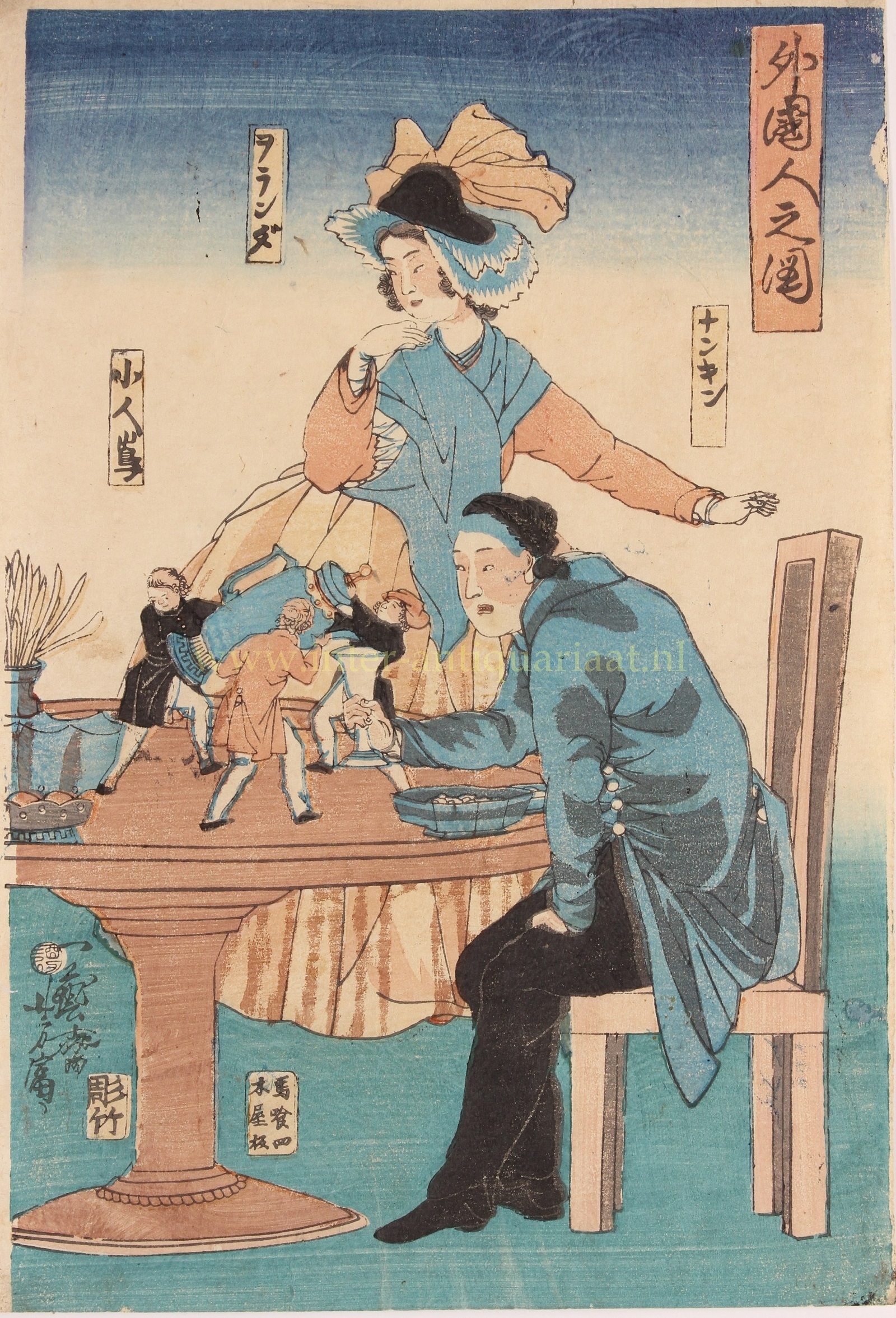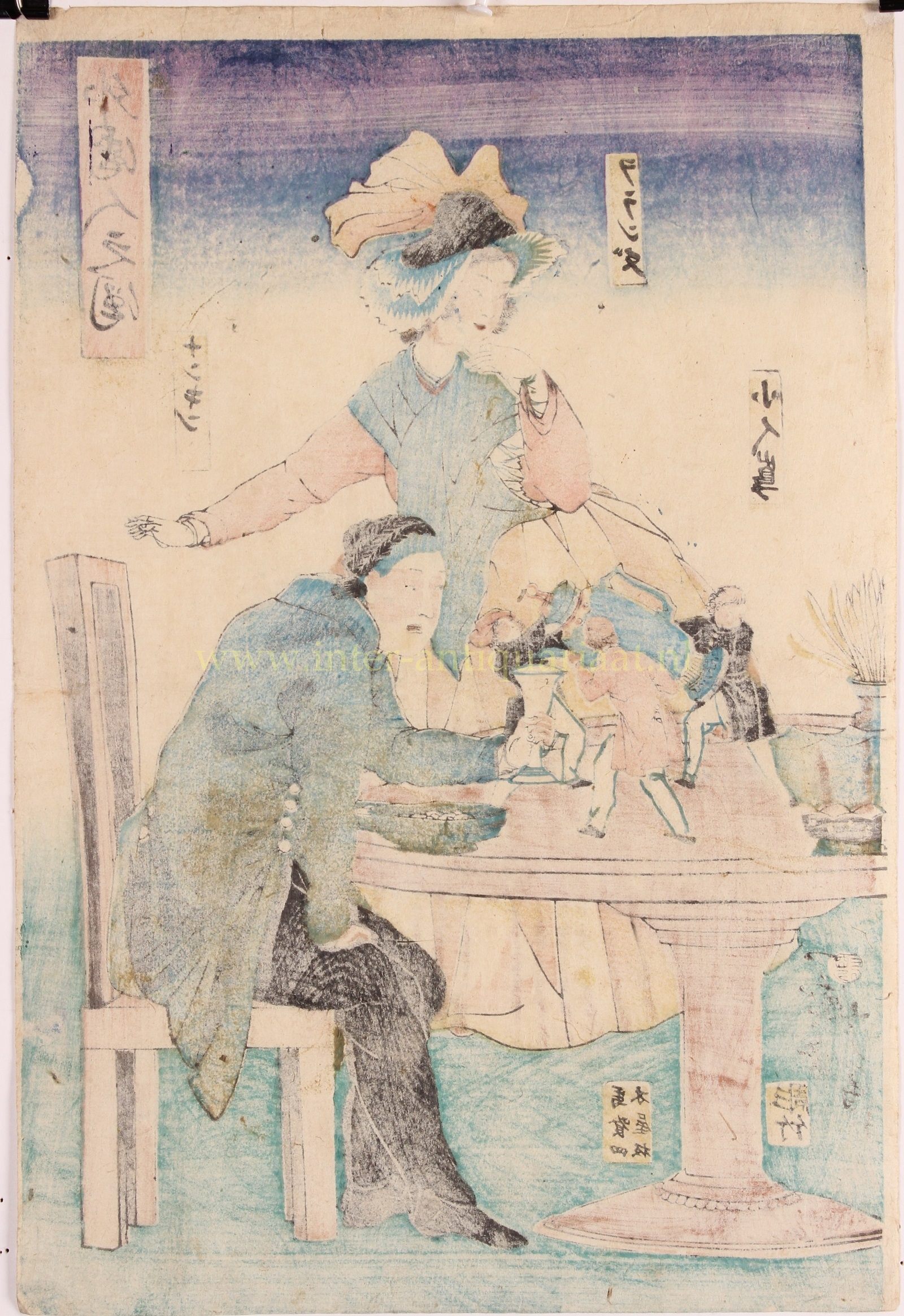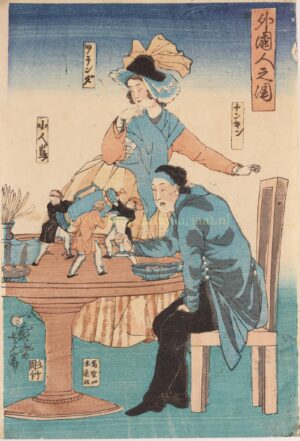外国人之図 (Land of strangers), woodcut printed in colours made by Utagawa Yoshitomi, published by Kiya Sōjirō in 1861. Size approx. 37 x 25 cm.
From the 1630s until the mid-nineteenth century, Japan was virtually closed off to foreigners. The Dutch were the only Westerners permitted to reside and trade there, from 1641 onwards. They were subject to strict regulations and were only allowed to live on Dejima, an artificial island in the port of Nagasaki. Chinese traders also conducted business with Japan through Nagasaki and had their own trading post (Tōjin yashiki, 唐人屋敷) in the harbour from 1689 onwards. However, unlike the Dutch on Dejima, the Chinese had more freedom to come and go.
In 1858, the Dutch monopoly ended, marking the end of the Dejima era. The United States, Great Britain, France, and Russia also gained trading rights with Japan. Foreigners settled in Yokohama, which quickly developed into Japan’s main port. They had much more freedom there than in Nagasaki, and women were also allowed to reside there. An international community emerged, in which the Dutch were no longer the primary figures.
Dutch assistance was still sought for building a Japanese navy and constructing steamships. The Dutch established a machine factory, set up a naval school, and trained Japanese naval officers.
The woodcut shown here depicting a Dutch woman, a Chinese man, and Pygmies/(Negritos?) is a so-called Yokohama-e print, printed from a woodblock depicting foreigners in the port city of Yokohama. Foreigners were a curiosity for the Japanese, and these prints met a huge demand. Prints made in Yokohama were more refined than earlier prints from Nagasaki. The artistic level was higher, the printing quality was better, and more colours were used.
Price: Euro 850,- (incl. frame)





